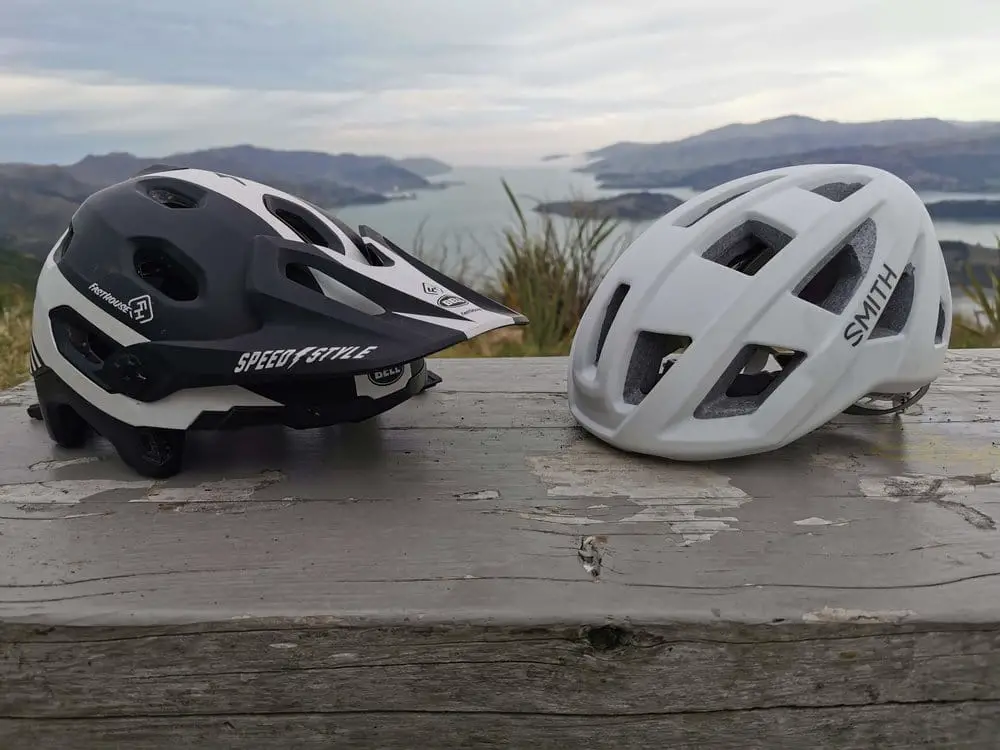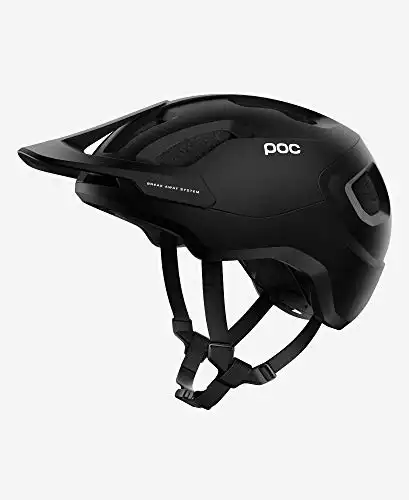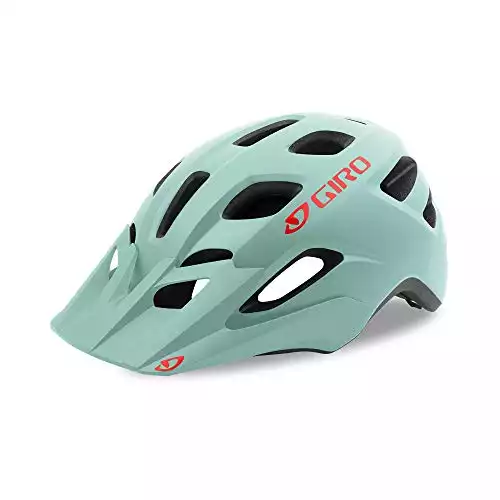Can I use a road helmet for mountain biking? The short answer here is no. Or at least it definitely isn’t recommended. This is one primary reason; a collision on the road is different from a crash on an awkward and unforgiving steep hill and the two helmets are built to manage the crashes in these two very different environments.
A mountain bike helmet provides more protection around the head, and the two helmets are designed with two completely different purposes in mind. Yes, both will be designed to certain safety standards, and both are designed to protect your head. But under very different circumstances.
- A couple of quick reasons to wear a MTB helmet:
- What is the Difference Between a MTB Helmet and a Road Bike Helmet?
- Difference in Construction
- Does a Mountain Bike Helmet Actually Give a Rider More Protection than a Road Helmet?
- Can you use a Mountain Bike Helmet for Road Biking?
- Helmets for both Road and Mountain
- Final Comments
As annoying as it is to have to purchase duplicate gear when you are a multi-discipline cyclist, it is a necessity. No, it is not just the cycling industry trying to get twice the amount of money out of you, it really is a matter of health and safety.
A couple of quick reasons to wear a MTB helmet:
In all honesty, when I started out mountain biking a few years back, I came from a road cycling background. I rode with a road helmet for a few months as I figured I didn’t really need anything too fancy, given I wasn’t any good at mountain biking. I had it in my head that I probably wouldn’t come off until I was riding the advanced trails.
How wrong was I?
I did come off and hit the back of my head. It was at this point that I realized how incredibly vulnerable the rear of my head was to any crash. So before my next ride, I went out and purchased a mountain bike helmet with a decent amount of coverage around the rear of the head. And I have always used a mountain bike helmet for mountain biking since.
Please note: Although not recommended, if you are just riding dead flat trails with no surprises, gravel roads, or just around town, a road bike helmet would do the trick. We would recommend a more protection for anything a little more difficult.
What is the Difference Between a MTB Helmet and a Road Bike Helmet?
There is a big difference in what a mountain biker and road biker look for in a helmet. This is mostly down to how they ride and more importantly how they crash.
What do Road Bikers Look For in a Helmet?
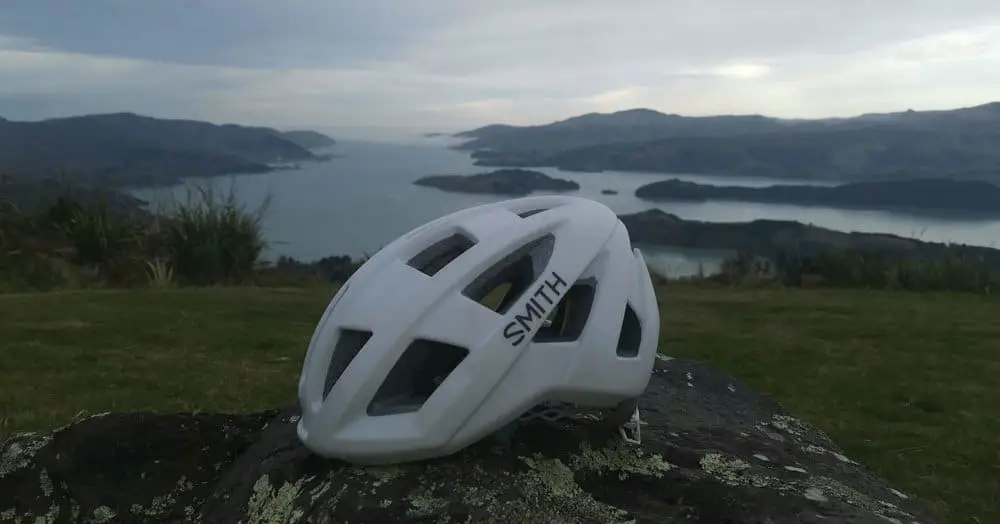
A road cyclist prioritizes speed. A road bike helmet is designed to be aerodynamic and lightweight. It is designed with as much ventilation as it can allow, while still offering protection in a crash.
A road cyclist will spend significant money and time on ensuring their gear is lightweight and aerodynamic as possible. This is done so the cyclist exerts as little energy as possible. As at high speeds, a tiny bit more resistance means a lot more effort required from the cyclist. Effectively, the helmet is made as minimalist as possible while still meeting safety requirements.
A research survey conducted by The Princess Royal Hospital showed that 87% of cycling-related injuries were caused by off-road riding, indicating crashes were far more prominent in mountain biking than road cycling check out the full paper here.
What do Mountain Bikers Look For in a Helmet?
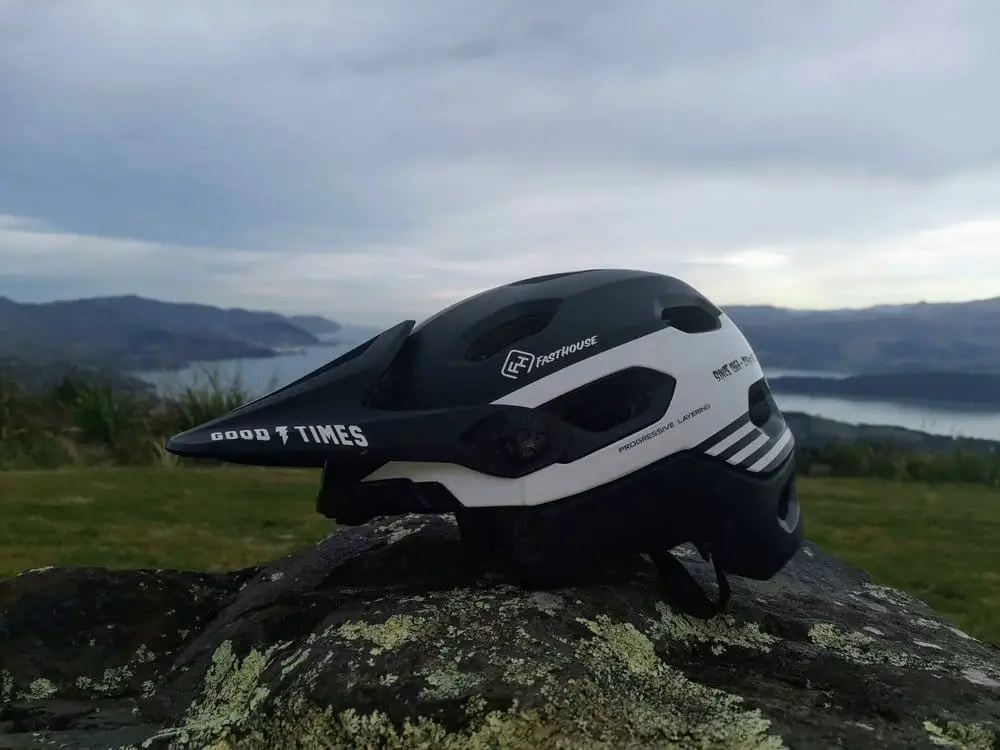
A mountain biker prioritizes safety. Mountain bikers care a lot less about the aerodynamics of the set-up, and more on the skill and lines that the rider chooses for speed. As the riding becomes faster and more difficult, mountain bike helmets have to increase in protection.
Speaking from experience, mountain biking involves a bit of crashing, particularly when you are starting out on the technical terrain and don’t quite have enough speed to make it over a few of those rock gardens. Companies design helmets to exceed safety requirements, there have been improvements in anti-rotational systems, and greater protection around the head for the just-in-case scenario.
But won’t my head still be protected in a crashed?
A ‘design crash’ on a road bike is a high-speed forward-moving crash on the pavement. A mountain bike crash tends to be a lot more awkward. This is due to the typically rough and challenging terrain, not a slide over a smooth surface.
The mountain bike helmet has more coverage, particularly around the rear of the head. This is for two reasons,
1) It is possible that a rider may flip over or take a knock to the back of the head, or
2) The helmet protects the rear of the head from sharp rocks or other objects that could harm the head.
Difference in Construction
The two helmets are constructed slightly differently. A typical road bike helmet will be constructed using in-mold technology. The in-mold technology is a lighter way of binding the foam layer to the outer shell.
A mountain bike helmet will have a hard shell that is attached to the EPS liner with either strong glue or using the in-mold technology.
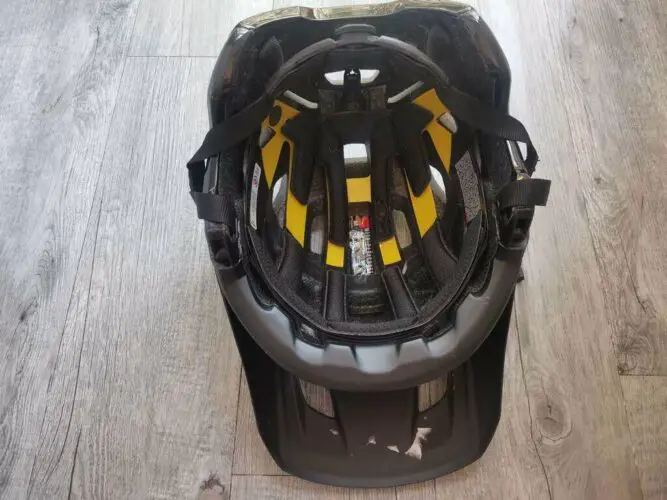
The shape is clearly different, with a mountain bike helmet protecting more of the sides and rear of the head, with fewer vents than a road helmet. With fewer vents, there is less material to protect your head. Hence a much harder material has to be used in to offer the same amount of protection in a crash. By making the material harder, this increases the force transferred to the head-on impact, which may be fine in a road crash, as it is usually more of a slide across the pavement, which requires hard materials anyway. However, it would not be a comfortable crash on mountain biking terrain where you might come to an abrupt stop because you have hit a tree, for instance.
The difference in construction does make a big difference in the protection on your head and has the potential to be that defining factor in whether it saves your life or not.
Does a Mountain Bike Helmet Actually Give a Rider More Protection than a Road Helmet?
Yes, just look at the profile of a mountain bike helmet next to a profile of a road bike helmet. A mountain bike helmet has significantly more coverage, and more coverage will mean more protection. An awkward fall from a mountain bike could have you hitting the rear of your head on a hard rock or root. You could prevent this by wearing a mountain bike helmet, but not so with a road bike helmet.
The much larger vents on a road bike helmet also leave your head vulnerable for sticks to poke through. Whereas there is less of a chance of this occuring with the smaller vents on a mountain bike helmet. Both helmets give you the option to have anti-rotational systems (such as MIPS) and having these systems are equally as important in both disciplines.
Other Features that make Purchasing a Mountain Bike Helmet a Worthwhile Option
Aside from greater protection, a mountain bike helmet will usually feature a few additions which help while riding.
A visor will shield the rider’s eyes from glaring sunlight while riding in dappled light, potentially reducing the chances of hitting something unwanted or crashing.
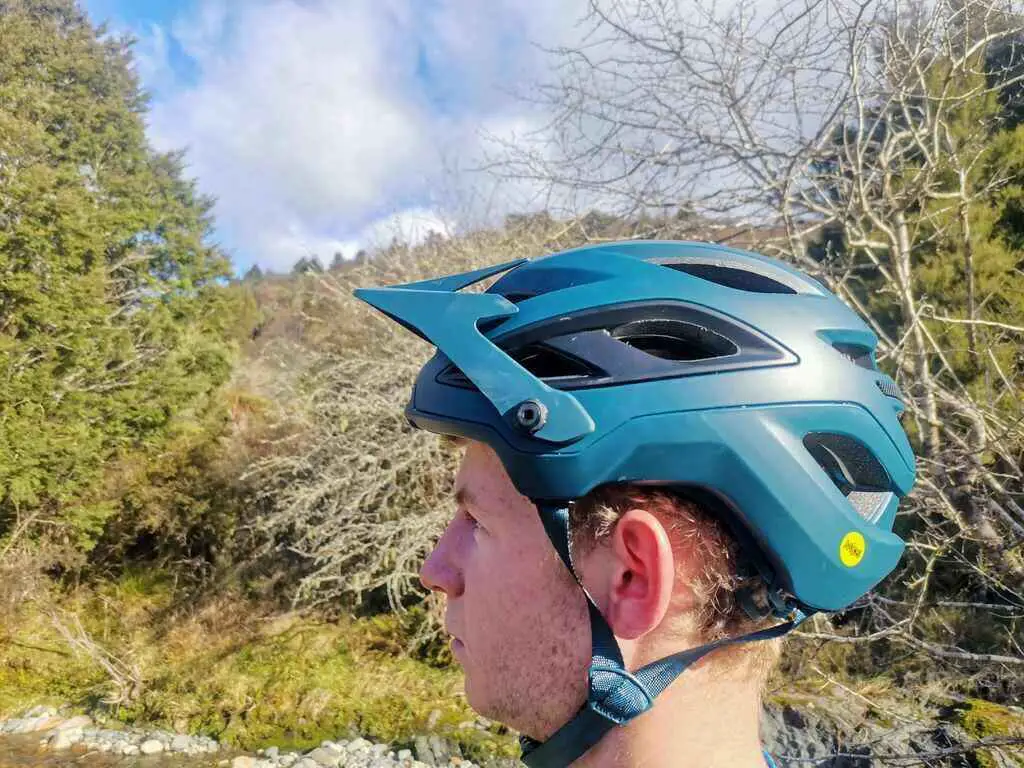
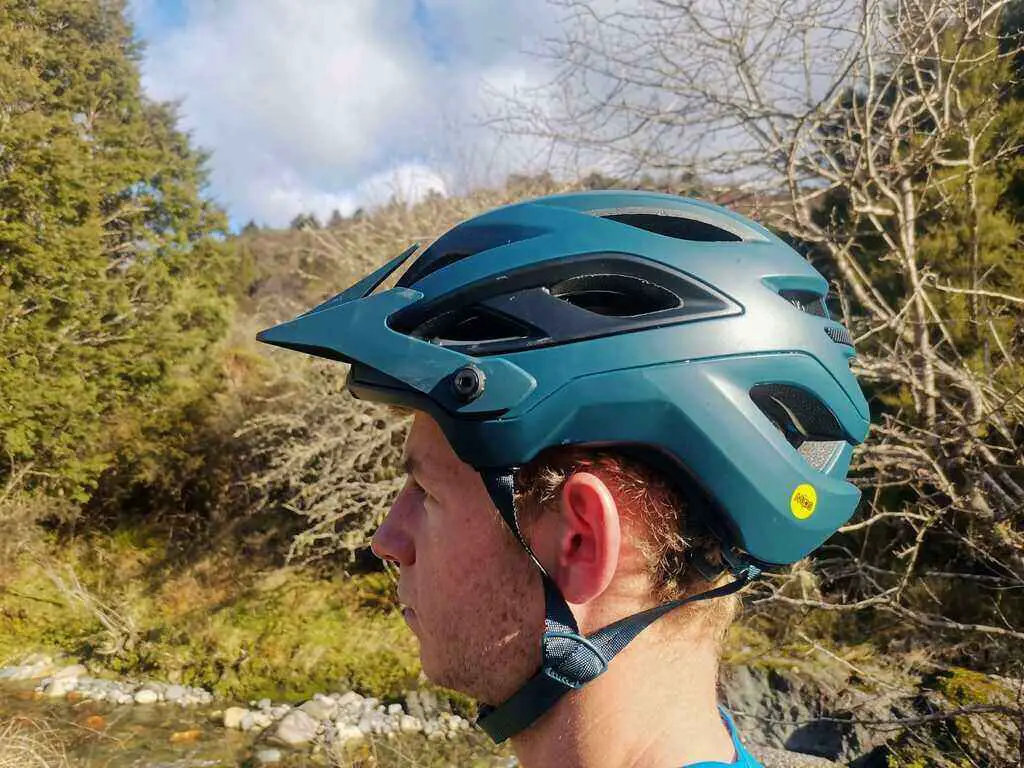
You are able to adjust the visor to prevent the sun getting in your eyes. Additionally, some visors are designed to break away in a crash, so the visor doesn’t get in the way. For more on mountain bike helmet visors check out our article on why MTB helmet visors exist.
Whereas for a road cyclist, having a visor would limit vision while riding due to the position on the bike, not to mention the reduction in aerodynamics!
Many mountain bike helmets are compatible with goggles. This allows you to store the goggles on the helmet, beneath the visor. This keeps them secure on your helmet and means you don’t have to carry the goggles up on your handlebars. Some mountain bike helmets also have a light and camera mount. This is very useful for night riding, or recording yourself shredding out in the trails.
Can you use a Mountain Bike Helmet for Road Biking?
We have established that the two helmet styles have very different purposes, but in saying that, a mountain bike helmet does provide more protection. If you aren’t going for speed, or don’t mind having a visor in your vision (some prefer it as it blocks the sun), there isn’t really any significant safety reasons not to. A few points to consider would be that;
- A visor reduces aerodynamics significantly and may get in the way in a high-speed crash. This potentially causing your head to have an awkward angle while crashing.
- Mountain bike helmets have significantly less ventilation. So it may get a little warmer while riding on the tarmac, especially as the tarmac heats up.
- The mountain bike helmet, due to having more coverage and protection, will also be a bit heavier. This becomes noticeable (and quite uncomfortable) in the aerodynamic road riding position.

Mountain Bike Helmets suitable for road cycling
If you aren’t a high-speed racer and don’t feel inclined to purchase a second helmet for your road riding, a mountain bike helmet will be sufficient. If you are in the process of buying a mountain bike helmet and intend to use it for both disciplines, we would recommend the following;
- Purchase a helmet with a breakaway visor. If you crash, the visor will break off and won’t cause your head or neck to bend at obscure angles.
- Alternatively, a helmet with a removable visor. Then you can ride visor-less on the road, and with a visor on the trails
- Purchase a helmet that is lightweight and provides plenty of ventilation.
- The helmet must still protect the rear of the head in case of a crash on the trails.
Helmets for both Road and Mountain
If you don’t want to spend that extra amount on two types of helmets, the helmets below are a great choice. They offer sufficient protection and features for both disciplines making them great all round helmets.
POC Axion
The POC Axion is crazy light. Made for the rider wanting a very good all-around helmet without the heavy price tag.
Not only it the Axion an extremely stylish helmet with well above standard protection, but it also has a breakaway visor to keep your head safe. It also features POCs unique airflow channels that will keep your head cool, even when road biking on hot summers days.
Giro Fixture
For the rider who wants to look like they spent more, doesn’t mind a fixed visor, but still wants all the other features that come with a more expensive lid.
This helmet allows you to detach and reattach your visor as you please. This is very handy if you are constantly switching between the two disciplines. It features an in-mold construction, which reduces the weight of the helmet. It also features a Roc Loc Sport fit system for greater fit and comfort.
Final Comments
If your budget allows for it, purchasing two helmets will be more comfortable in the long run. It is always worth spending a little extra to protect your head.
For tighter budgets, helmets that have been designed to be suitable for both disciples are a great option. They offer more protection than a standard road bike helmet. But they still have many of the key features such as breakaway visors and good air flow.
These are professionals that are designing helmets. They have had many years of refining designs to increase the safety of riders.
Personally, I made the decision to get two helmets and haven’t looked back. My road helmet (which hasn’t been crashed) is still going strong, while I replace my MTB helmet a bit more often!
If you are wondering when to replace a bike helmet, check out our in-depth discussion here.
Making two purchases will mean you will be more comfortable on both bikes, and enjoy the ride just that much more! And you can ride without the worry of whether you are protected or not!


If you want some more information, or some idea on how to buy a good mountain bike helmet, check out these posts!
